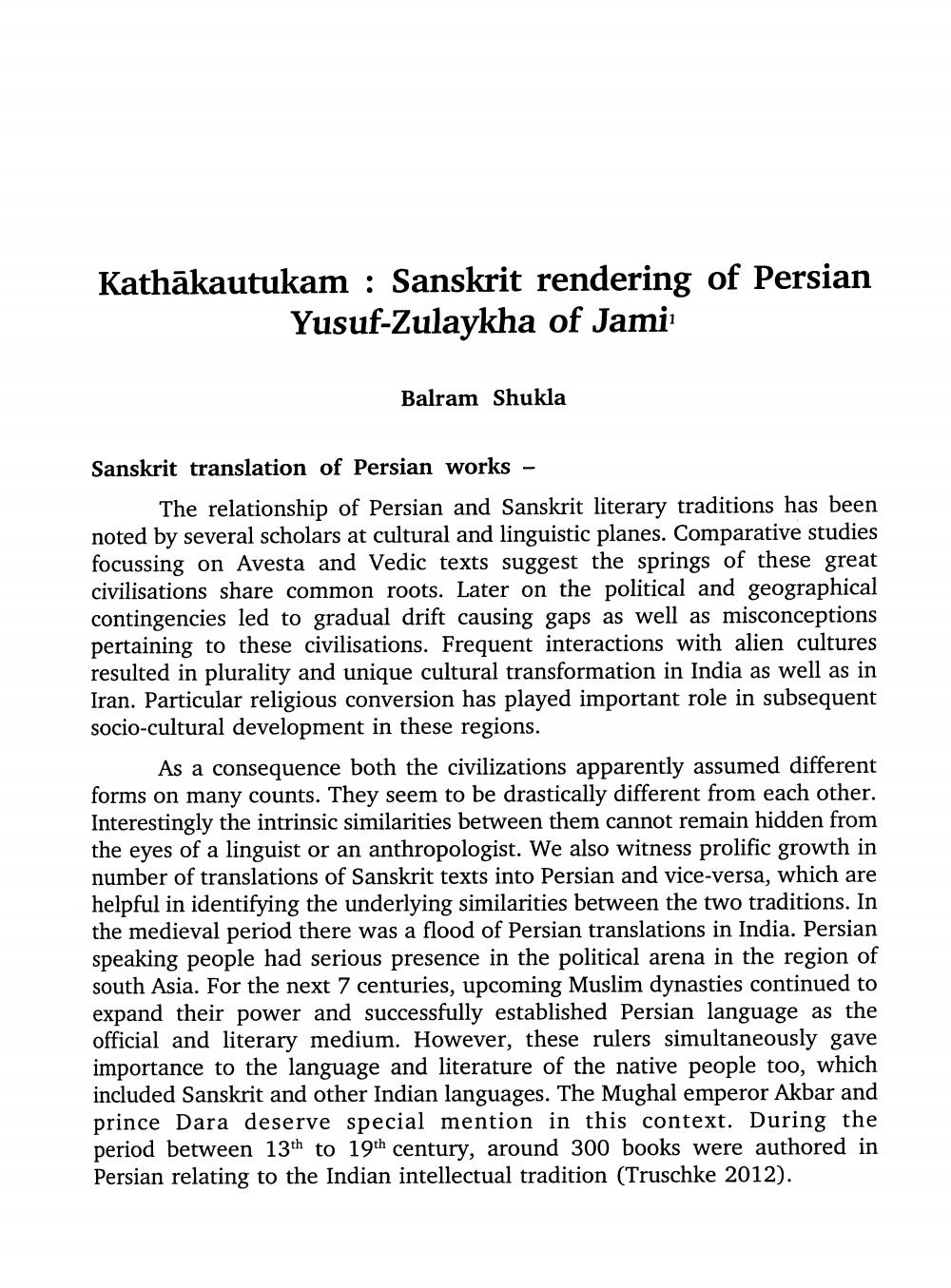________________
Kathākautukam : Sanskrit rendering of Persian
Yusuf-Zulaykha of Jamii
Balram Shukla
Sanskrit translation of Persian works -
The relationship of Persian and Sanskrit literary traditions has been noted by several scholars at cultural and linguistic planes. Comparative studies focussing on Avesta and Vedic texts suggest the springs of these great civilisations share common roots. Later on the political and geographical contingencies led to gradual drift causing gaps as well as misconceptions
lining to these civilisations. Frequent interactions with alien cultures resulted in plurality and unique cultural transformation in India as well as in Iran. Particular religious conversion has played important role in subsequent socio-cultural development in these regions.
As a consequence both the civilizations apparently assumed different forms on many counts. They seem to be drastically different from each other. Interestingly the intrinsic similarities between them cannot remain hidden from the eyes of a linguist or an anthropologist. We also witness prolific growth in number of translations of Sanskrit texts into Persian and vice-versa, which are helpful in identifying the underlying similarities between the two traditions. In the medieval period there was a flood of Persian translations in India. Persian speaking people had serious presence in the political arena in the region of south Asia. For the next 7 centuries, upcoming Muslim dynasties continued to expand their power and successfully established Persian language as the official and literary medium. However, these rulers simultaneously gave importance to the language and literature of the native people too, which included Sanskrit and other Indian languages. The Mughal emperor Akbar and prince Dara deserve special mention in this context. During the period between 13th to 19th century, around 300 books were authored in Persian relating to the Indian intellectual tradition (Truschke 2012).




